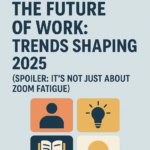Have you ever wondered if someone out there looks just like you? Embark on a thrilling doppelganger hunt with our expert tips and tricks to uncover your uncanny twin!
Ever pondered the possibility of a perfect stranger out there who’s your spitting image? The concept of stumbling upon a doppelganger – someone who’s your look-alike but not linked by blood – has captivated minds across generations. It’s like a worldwide game of “Who’s My Twin?” where there could be around seven individuals sporting your mirror image in various corners of the globe.
Think about it – the idea of your doppelganger lurking out there is simultaneously thrilling and surreal. This compelling thought triggers questions – what if there’s this face, eerily resembling yours, yet no family ties?
But let’s be real – for most of us non-identical people, spotting our doppelganger feels like chasing a unicorn. The odds of bumping into one of those seven lookalikes are slimmer than a credit card. Luckily, technology’s got our back, making the quest for our twin-from-another-mother a tad more achievable.
So, if you want to learn how to find your doppelganger, you’re in for a ride. In this read, we’re diving deep into the treasure hunt, dishing out strategies and secrets to embark on your doppelganger pursuit. Plus, we’ll delve into how cutting-edge tech has turned this quest into something extraordinary. Brace yourself for the uncanny twin journey and prepare to soak in this remarkable adventure’s thrill!
What is a doppelganger?
Ever had that uncanny moment when you bumped into someone who could easily be your twin? You know, that instance when you do a double-take, thinking it’s someone you know, only to realize they’re a stranger? If you’ve experienced this, you’ve likely crossed paths with what’s known as a doppelgänger!
Curious about doppelgängers? The term hails from German, translating to “double goer.” Essentially, it’s when two individuals look so alike that they could be mistaken for twins. Encountering a doppelgänger can be quite the shocker, whether it’s someone resembling your mirror image or a friend’s long-lost twin. No wonder these doppelgängers sneak into spooky tales, cranking up the eerie factor.
In the realm of literature, a doppelgänger symbolizes the mirror image of another character. While similarities exist, their differences hold profound meaning. Frequently, the doppelgänger embodies opposing qualities, steering them down a different path from the protagonist.
Often, doppelgängers take on the role of the protagonist’s sinister twin. Consider the classic case of “The Strange Case of Dr. Jekyll and Mr. Hyde” by Robert Louis Stevenson, where both personas share a body but represent good and evil.
Doppelgängers aren’t just fictional; they’re woven into the fabric of cultures worldwide, often depicted as specters or phantoms resembling real people. Many believe that encountering one is an ill omen, signaling impending misfortune.
What’s captivating is that historical figures like President Abraham Lincoln, Catherine the Great, Percy Shelley, and Queen Elizabeth I have all been tied to tales of spotting their doppelgängers. Passed down through generations, these stories remain enthralling, even though their accuracy is up for debate. It’s intriguing how these narratives keep captivating our imagination.
How many doppelgangers does a person have?
Wondering about the doppelganger count? It’s a curiosity that’s gripped minds for generations. So, how many look-alikes can you potentially have out there?
According to research, nabbing an absolute doppelganger – someone who’s your identical twin in appearance but not blood – is like finding a unicorn. Stats say there’s roughly a 1 in 135 shot that such a match exists anywhere on this spinning globe. With nearly 8 billion people roaming around, that still leaves around 80,000 folks rocking your specific traits.
But wait, there’s more. The odds start to rise when we zoom in on those who share a mighty resemblance but aren’t photocopies. Check out artist François Brunelle’s ‘I’m Not a Look-Alike!’ project. He’s put over 200 unrelated yet uncannily similar folks in the spotlight. They might not be clones, but their visual kinship is striking.
And here’s the science behind it all – the magic lies in genes. Studies drop the truth bomb that doppelgängers often share similar genetic quirks, or “single nucleotide polymorphisms (SNPs),” if you’re into science lingo. These SNPs are like puppet masters, pulling the strings on your looks, especially those facial features. These genetic quirks usually roll the dice randomly, but a shared SNP sheet can predict a shared likeness.
Hold onto your seat because there’s more. These look-alike duos might rock a similar appearance, and their choices and habits might also sync up. Smoking, education, and weight are just a few things that might match. Genes have a say in more than just how you look – they influence the whole shebang, from looks to lifestyle.
With the world’s population soaring and genes playing their mutation game, more doppelgängers are bound to cross your path. It’s a genetic rollercoaster that shines a light on the beauty of human diversity. So, while finding that twin might feel like searching for a needle in a haystack, remember – the world is loaded with lookalikes, celebrating our uniqueness and shared threads.
Do we all have doppelgangers?
Doppelgangers – the idea of having a twin-like look-alike roaming the globe – it’s a conversation starter that’s been circling for ages. You can’t deny the allure it brings, sparking conversations and igniting imaginations. But here’s the scoop: while it’s a hot topic, scientific backup for the existence of doppelgangers for everyone isn’t in full supply.
Finding a carbon copy of yourself? Let’s just say it’s as rare as finding a unicorn. The brushstrokes of genetics paint your uniqueness, countless combinations creating your one-of-a-kind features. And let’s not forget, time, lifestyle, and your surroundings add even more layers to your distinct appearance.
Sure, there’s a good chance someone, somewhere, looks like you – without being your twin. And let’s face it, with over 7 billion souls on this planet; it’s statistically likely that you’ll stumble upon someone sporting a few of your physical traits. People do that double-take all the time, thinking they’ve spotted a familiar face, coining the term “doppelganger.”
But let’s level here – a clone for everyone isn’t in the cards. Still, the world lacks look-alikes or people who could pass for your twin’s cousin. Remember, it’s an excellent concept, a conversation starter, and a slice of pop culture, but not something science has stamped with a seal of certainty.
What is the science behind doppelgangers?
The concept of doppelgangers, or look-alikes, has fascinated people for centuries, but from a scientific perspective. Our genetics heavily influences our physical appearance, the unique combinations of genes inherited from our parents.
These genes determine traits such as facial features, hair color, eye color, and body structure. While there are billions of possible genetic combinations, there is still a finite number of variations. As a result, unrelated individuals can share striking similarities in their physical appearances, making them appear like doppelgangers.
Factors influencing similarities between unrelated individuals
You might be curious about the factors that unexpectedly bring unrelated folks together in the looks department. Well, here’s the scoop on what’s in play:
- Genetics: Let’s start with the biggie – genetics. Those genes passed down from your folks? They’re like the architects of your appearance, deciding everything from face shape to hair hue. The gene mix might be vast, but there’s a limit to the variations, which means some of us look pretty darn similar.
- Facial symmetry: Ever heard of facial symmetry? It’s like nature’s magnet for our eyes. Studies say we’re drawn to folks with symmetrical mugs. So, if you and someone else share those balanced features, even if you’re not related, you might seem like two peas in a pod.
- Population shuffle: Picture this: a planet with over 7 billion humans. With that many faces around, the odds are high that you’ll come across a lookalike sooner or later. It’s like a global game of “Who Looks Like Me?”
- Cultural connections: Sharing a culture or region can mean more than just similar customs. It can lead to resemblances, too. When ancestry and environment unite, they might just produce a bunch of lookalikes within a specific group.
- Mind tricks: Our brains aren’t always on point – they can play tricks on us. When you spot someone with a hint of resemblance, your mind might shout, “Hey, you know that face!” even if you don’t. It’s like your brain’s personal game of connecting the dots.
- Survival style: Evolution doesn’t just dictate which species stick around – it can influence looks, too. Certain features might thrive in specific environments, creating a bunch of similar-looking folks in one place. So, in a way, it’s like nature’s way of styling a community.
So, there you have it – the factors that play matchmakers with unrelated appearances. It’s like a blend of genes, psychology, geography, and a dash of evolution all rolled into one intriguing mix.
The role of SNPs (Single Nucleotide Polymorphisms) in doppelganger similarities
Single nucleotide polymorphisms (SNPs) are variations in a single DNA building block (nucleotide) that occur naturally in the human genome. While most SNPs have little or no impact on an individual’s traits, some can influence physical characteristics and contribute to shared appearances between unrelated individuals. SNPs can affect traits like skin color, eye color, and facial features.
It’s important to note that while science can explain some physical similarities between unrelated individuals, the concept of an exact doppelganger, like a long-lost twin, is more of a cultural and mythical idea than a common scientific phenomenon.
The shared appearances between unrelated individuals are fascinating from a genetic perspective and remind us of the complexity and diversity of human traits. However, each person remains unique and shaped by genetics, environment, and personal experiences.
What is the psychological fascination with finding doppelgangers?
The psychological fascination with finding doppelgangers lies in their capacity to challenge our sense of individuality and prompt introspection about self-identity. Doppelgangers evoke the “uncanny valley” effect, blurring familiarity and discomfort due to their near-identical appearances with subtle differences. In literature and horror stories, they symbolize dark aspects of human nature and inner conflicts, instilling fear and dread.
Doppelgangers also serve as symbols of the complexity of the human psyche and can manifest unconscious desires and fears. Meeting a look-alike may trigger psychological projection, where one projects their traits onto the other, leading to fascination or unease. Additionally, the cultural and mythical significance of doppelgangers, linked to superstitions and folklore, adds to their intriguing allure.
Freudian interpretations of doppelgangers in dreams and the subconscious
In psychology, the influential psychoanalyst Sigmund Freud explored the concept of doppelgangers in dreams and the subconscious. Freud believed dreams often served as a window into our unconscious desires, fears, and unresolved conflicts. Seeing a counterpart in a dream could represent a manifestation of our hidden selves or unacknowledged aspects of our personality.
According to Freud, encountering a doppelganger in a dream might reflect our struggle to integrate our self-identity or the fear of facing repressed emotions. The doppelganger could symbolize our inner conflicts, unresolved issues, or even feelings of guilt. In this context, the doppelganger serves as a symbolic representation of the self’s unconscious dimensions.
The allure of doppelgangers in literature and horror stories:
Doppelgangers have a long-standing allure in literature and horror stories, captivating readers with their eerie and unsettling nature. Authors often use doppelgangers to explore identity, duality, and the human psyche.
The doppelganger motif is prevalent in Gothic literature, where characters encounter mysterious and malevolent doubles. These doppelgangers often represent the darker aspects of the protagonist’s personality or embody suppressed desires. Classic tales like “Dr. Jekyll and Mr. Hyde” and “Frankenstein” feature doppelgangers that personify a single individual’s struggle between good and evil.
In horror tales, the fear of stumbling upon one’s doppelgänger takes center stage, often foreshadowing a looming catastrophe or impending demise. The eerie likeness shared between the main character and their doppelgänger evokes a sense of unease and foreboding, imprinting readers with an unforgettable and unsettling narrative encounter.
The psychological implications of meeting a doppelganger
Meeting someone who mirrors your appearance can set off a whirlwind of psychological responses. For some, it’s an exciting experience, sparking a sense of connection or a curiosity to explore shared traits.
However, there’s another side to the coin. Encountering a doppelganger can evoke feelings of unease, confusion, or even trigger an existential crisis. It’s a mind-bending encounter that forces you to question what defines your individuality.
In the realm of psychology, coming face-to-face with your double can lead to deep introspection. Suddenly, you find yourself pondering questions about your identity, value, and role in the world. Having a twin (or near-twin) out there challenges your sense of self.
Have you ever heard of the “uncanny valley”? It’s when similarity merges with a hint of difference, creating a chilling sensation. It feels like entering a realm where the familiar takes a detour into the unfamiliar, leaving you uncertain about what’s real.
But here’s the twist – doppelgangers aren’t just a puzzle to solve. They delve into your psyche, revealing layers of self-discovery and unspoken desires. It’s like peering into a mirror and contemplating the myriad versions of yourself that could exist.
Doppelgangers act as psychological adventurers, whether in dreams, tales, or real-life encounters, prompting us to unlock the secrets of self-identity. They’re the enigmatic riddle that keeps us pondering the complexities of the human mind and the mystery of our own existence.
What are some real-life stories of finding your doppelganger?
Real-life doppelganger stories often involve individuals encountering someone who looks remarkably similar to them without any familial connection. These chance meetings can be quite compelling and surprising. People may meet their doppelgangers in unexpected places like airports, restaurants, or even through social media, where strangers point out the striking resemblance.
Such encounters may lead to feelings of connection, curiosity, and a sense of shared identity despite being unrelated. Here are some famous doppelganger encounters that have taken place in real-time.
Emilie Sagée
In the realm of intriguing doppelganger stories, there’s one about Emilie Sagée, a French teacher at an exclusive girls’ school in Latvia back in 1845. One day while she was writing on the blackboard, an exact copy of her appeared beside her. This mysterious double mimicked her every move except for holding any chalk. Surprisingly, thirteen students witnessed this bizarre event.
Over the next year, Emilie’s doppelganger made several appearances, with the most astonishing one happening in front of the entire student body of 42 students. On a summer day in 1846, they saw Sagée gathering flowers in the school’s garden as they worked at the long tables.
To their surprise, while the real Emilie went to talk to the headmistress, her doppelganger appeared in her chair. When two girls tried to touch the phantom, they felt an odd resistance in the air surrounding it before it slowly vanished. Quite an enigmatic tale, indeed!
Johann Wolfgang von Goethe
This intriguing case hints that doppelgangers might be linked to time or dimensional shifts. The renowned 18th-century German poet, Johann Wolfgang von Goethe, recounted his encounter with a counterpart in his autobiography “Poetry and Truth.” While visiting Friederike Brion, with whom he was involved romantically, Goethe saw a man in a gray suit trimmed in gold. The figure appeared briefly and then vanished, leaving Goethe moved emotionally and deeply thoughtful.
Eight years later, while traveling the same road to revisit Friederike, Goethe realized that he was wearing the same gray suit trimmed in gold that he had seen on his double years ago. This curious memory comforted Goethe after he and his young love parted ways at their visit’s end. The story leaves us pondering the mysteries of time, perception, and the enigmatic nature of doppelgangers.
Neil Thomas Douglas
Neil Thomas Douglas, a photographer from Glasgow, had an uncanny encounter with his doppelganger during a flight to Galway via Stansted. When he boarded the Ryanair flight, he found a bearded stranger sitting in his seat. To his surprise, the guy looked just like him! They shared a laugh about the coincidence, and even those around them joined in the amusement. They took a selfie to commemorate the strange encounter.
The coincidences didn’t end there. As if destined to cross paths, they later discovered they were both checking into the same hotel in Galway. Neil couldn’t believe the total weirdness of running into his look-alike again. Embracing the situation, they shared another laugh and a pint at the pub. Sometimes life’s unexpected encounters can leave us baffled and amused simultaneously!
How to find your doppelganger?
Discovering your doppelganger – that person who’s your spitting image – can be a real adventure, loaded with intrigue and enjoyment. So, ready for action? Here’s a roadmap to boost your odds of locating your doppelganger.
- Hit up those social media hubs: Think Facebook, Instagram, and Twitter. Fire up searches using your name or tags linked to your looks. Toss in hashtags or keywords that sum up your appearance or hobbies. Who knows? You might just stumble upon a doppelganger!
- Doppelganger websites and apps: Several websites and apps are specifically designed to help people find their look-alikes. You can upload your photo and let the platform search for potential matches. Some popular apps include Twin Strangers, Looky, and PopSugar’s Twinning App.
- Participate in look-alike contests: Keep an eye out for look-alike contests or events in your area or online. Many competitions and challenges are organized where people submit their photos, and winners are often rewarded for their resemblance to celebrities or others.
- Rally the troops: Reach out to your crew. Your pals, family, and even acquaintances might’ve crossed paths with your twin. So, why not ask around?
- Attend conventions or gatherings: Got a unique vibe, or are you part of a unique clan? Dive into conventions or meet-ups tied to your passions. They’re hotspots for spotting look-alikes. Who knows? Your doppelganger might just be chilling there too!
- Use facial recognition software: Some applications and websites utilize facial recognition technology to match people with their doppelgangers. These tools can scan your photo and find similarities with other users in their database.
- Be open to chance encounters: Be open-minded and observant in your everyday life. You might unexpectedly come across someone who looks like you while traveling, shopping, or attending public events.
- Collaborate with a professional agency: If you are interested in a more formal and thorough search for your doppelganger, consider contacting modeling or casting agencies specializing in look-alike talent.
Chasing doppelgangers is a blast, no doubt. But snagging a total carbon copy? Well, that’s like a game of chance. Remember, each of us is a masterpiece – even if you share a few brushstrokes, you’re still your canvas. Soak in the quest and celebrate the tapestry of individuality that paints the world!
How to find your doppelganger online?
Hunting your doppelganger on the web? There’s a treasure trove of sites and apps with facial recognition tricks or image flip-flops. Ready for the scoop on steps and choices to guide your search? Just keep on reading.
Twin Strangers
Twin Strangers is a free website known for finding your doppelganger using its algorithm. It has gained popularity on social media after helping numerous people discover their lookalikes. Simply create an account, upload your photo, and the algorithm will search for matches, displaying an AI match score.
Each account gets five free searches, so uploading multiple pictures increases your chances of finding a match. You can even add potential lookalikes to your “My Twins” list and communicate with them on the platform.
My Twin Finder
My Twin Finder is an app that uses reverse image search to find your lookalike. You can upload a photo from your gallery or take a new one for the search. The app then provides the results in your mobile browser without being limited to registered users. Ensure your face is clear and recognizable in the picture for accurate results.
StarByFace
StarByFace is a website that matches your face with those of celebrities, showing you stars with similar facial features. You can find out which celebrity you look like by uploading a picture with visible facial features. The website even allows you to create an image morph of you and your celebrity match using the gradient option.
Lookaliker
Lookaliker is another renowned website that uses face recognition technology to find your celebrity doppelgangers. To find your lookalike, log in using your Google account and upload a clear headshot from your device. The website searches its extensive database for celebrity twins and provides multiple possible matches, along with a similarity score and a link to the matched celebrity’s Wikipedia page.
Celebs
Celebs is a mobile application that uses an algorithm to find celebrities who resemble your face. No need to create an account or provide personal information; just upload your photo and wait for the results. The app even offers a morphed image of you and the celebrity match, and you can easily share the results on Snapchat or Instagram. For close matches, the app may prompt you to upgrade to Celebs+ with a weekly subscription cost of $5.
Google Arts and Culture
Google Arts and Culture app features ArtSelfie, which compares your selfie with thousands of artworks to find portraits that match your face. While it won’t help you find a living doppelganger, it can reveal if you resemble any historical figures or imaginary portraits. It’s a fun activity to try with friends and family.
FamilySearch
FamilySearch is an organization that helps trace ancestors and their stories, but it also has a feature to find doppelgangers. Using the Compare a Face feature, you can find your family doppelganger by comparing your facial features with your relatives. Upload your and your relatives’ photos, and the software will determine how much you resemble each family member. The person who resembles you the most in your family becomes your doppelganger.
Reverse Image Search
If none of the previous websites yield results, you can try reverse image search using Google Lens or other face recognition search engines. Simply add your clear headshot and browse through visually similar images. This method can help you find your doppelganger if they have an online presence, making it a more extensive search option.
What are some ethical considerations and privacy concerns when finding a doppelganger?
When you dive into the realm of doppelganger search, ethical concerns, and privacy considerations come into play – and it’s important to stay in the know.
- Informed agreement: Imagine spotting your lookalike and wanting to share their info. Before you do, make sure you get their go-ahead. It’s all about respecting their space and giving them the freedom to choose if they want to.
- Guarding your data: Some doppelganger platforms might ask for your pics or info. Before you leap, check if they’re locking things down tight. Data privacy should be non-negotiable, shielding you from snooping eyes and sketchy uses.
- Face tech check: If you’re diving into facial recognition tools for your doppelganger quest, be a privacy pro. Dig into how your facial data will be treated – stored, shared, used – and confirm they’ve got security covered.
- Social media smarts: If you stumble upon your twin through social media, play it cool. Respect their settings and keep the stalker vibe away. No sharing personal details without their green light.
- Cultural vibes: What’s fun for you might not be for someone else, especially across cultures. Watch how you’re perceived, and make sure you’re not stepping on toes.
- Emotional nudges: Meeting your doppelganger could stir up feelings for both sides. Be mindful – they might not be as excited as you. Respect their space, and don’t push.
- Sharing snaps: Thinking of posting doppelganger pics? Hit pause. Always get their nod before you hit “share.” No one likes an unexpected online twin.
- Respect their space: If you reach out, do it with respect. Avoid becoming an online pest – they might not want to engage, and that’s okay.
- A ripple effect: Remember, your actions can send waves. Consider how it could affect others involved if you’re sharing doppelganger info. Their friends and family didn’t sign up for this ride.
- Online explorer, not invader: While you search, don’t turn into an internet detective. Stick to public info, and leave their private stuff untouched.
Unearthing your doppelganger is exciting, but treading the ethical path is necessary. Consent matters, privacy rules, and respect should be your GPS through this journey. Whether you’re embarking on a virtual twin hunt or considering a connection, remember – doing it ethically and with respect is the key.
What is the future of finding your doppelganger?
Peering into a crystal ball and nailing down the exact doppelganger future? That’s like chasing shadows. But, we can look at what might come based on tech strides and society’s twists.
- Supercharged facial detectives: Brace yourself for facial recognition tech on steroids. Those algorithms? They’ll likely fine-tune into near perfection. Think better doppelganger matches and a world where spotting look-alikes becomes as casual as swiping your screen.
- AI’s doppelganger matchmaking: Ready for AI to do the legwork? Machine learning might soon speed up doppelganger quests. Imagine an AI-driven search serving up potential twins faster and more spot-on.
- Privacy, pings, and pongs: Here’s the hitch – the more we are tech-savvy, the more privacy buzz. Finding doppelgangers? It’s no different. Striking a harmony between data use and privacy? Yeah, that’s the mountain tech’s got to climb.
- Social media connects the dots: Brace for the social scene to step in. Think Facebook, Instagram – these platforms could be your doppelganger matchmakers. Want to hunt for look-alikes? Tap into those publicly shared pics and let the search commence.
- A dash of augmented reality magic: Augmented and virtual reality? They might make you buddies with your doppelganger, virtually. Or you could step into a digital world where you meet your twin avatar. Talk about tech meets magic.
- Ethical frontiers: The compass of ethics will shift. As doppelganger tech evolves, rules and checks will rise. Consider consent checks and data guardians – all to keep the doppelganger quest respectful and responsible.
- Entertainment’s favorite new toy: Hollywood and marketing might jump on board. Think celeb doppelgangers in ads or playful interactive escapades with look-alikes. What is the line between entertainment and reality? It’s getting blurry.
- Worldwide look-alikes: Hold onto your hat – tech might cut across cultures. Connecting people from different corners of the globe? That’s a possibility. Imagine bonding over similarities across continents.
Just remember, these guesses are just that – guesses. Tech takes its twists, society wiggles, and rules shuffle. But if doppelganger hunting’s your game, embrace it with a dash of ethics. After all, no matter how tech twists, privacy, and respect are non-negotiables.












